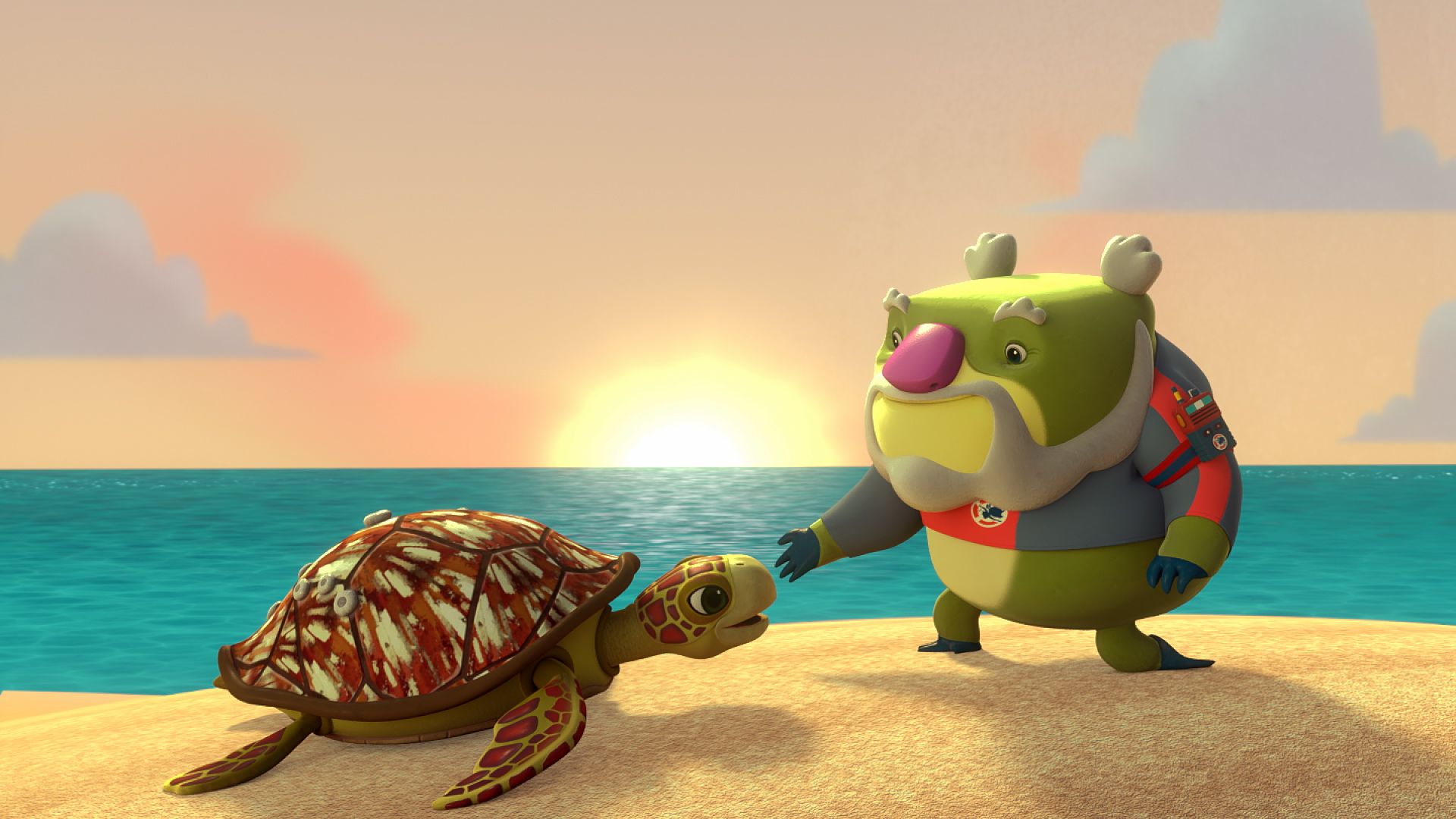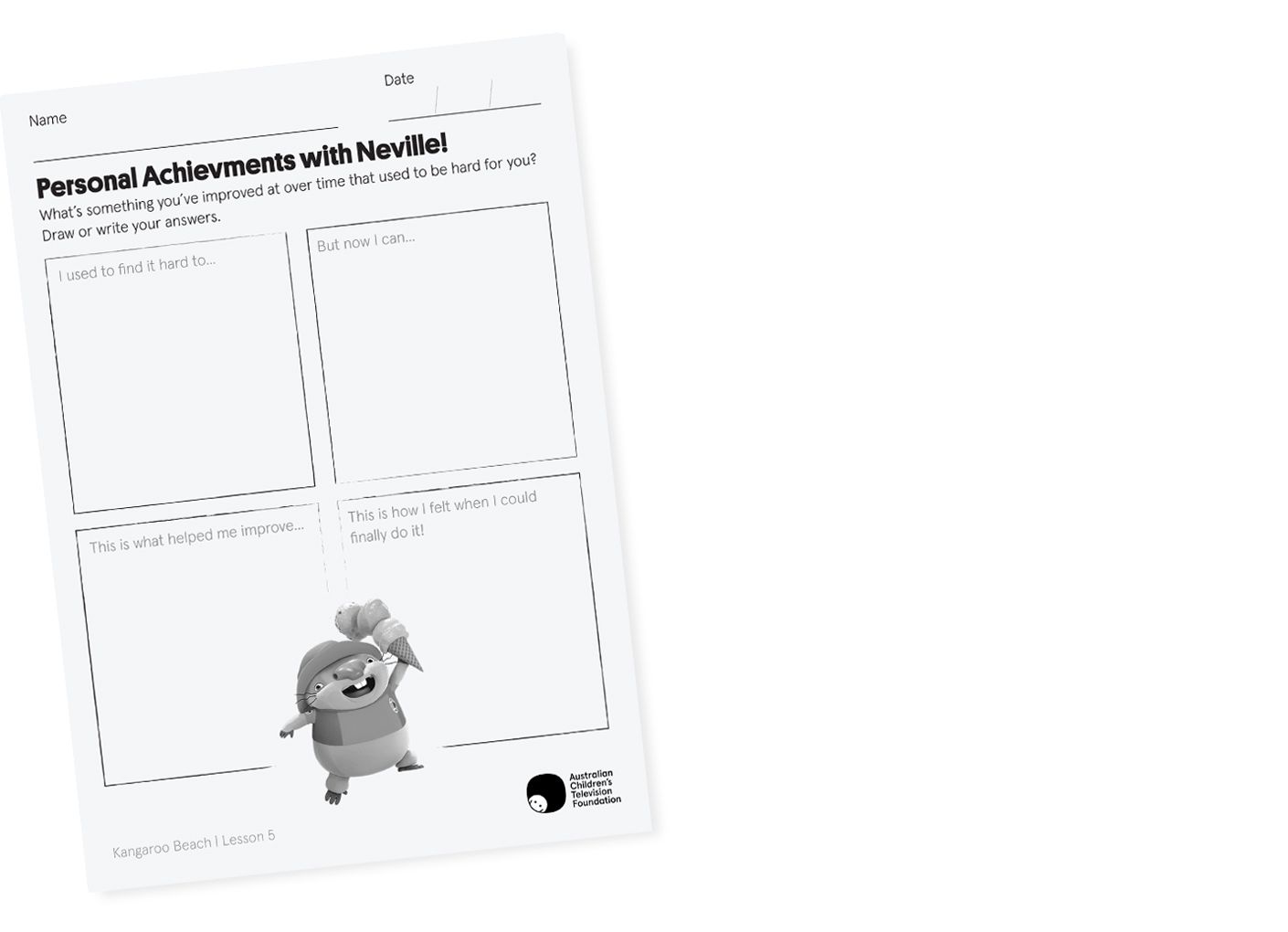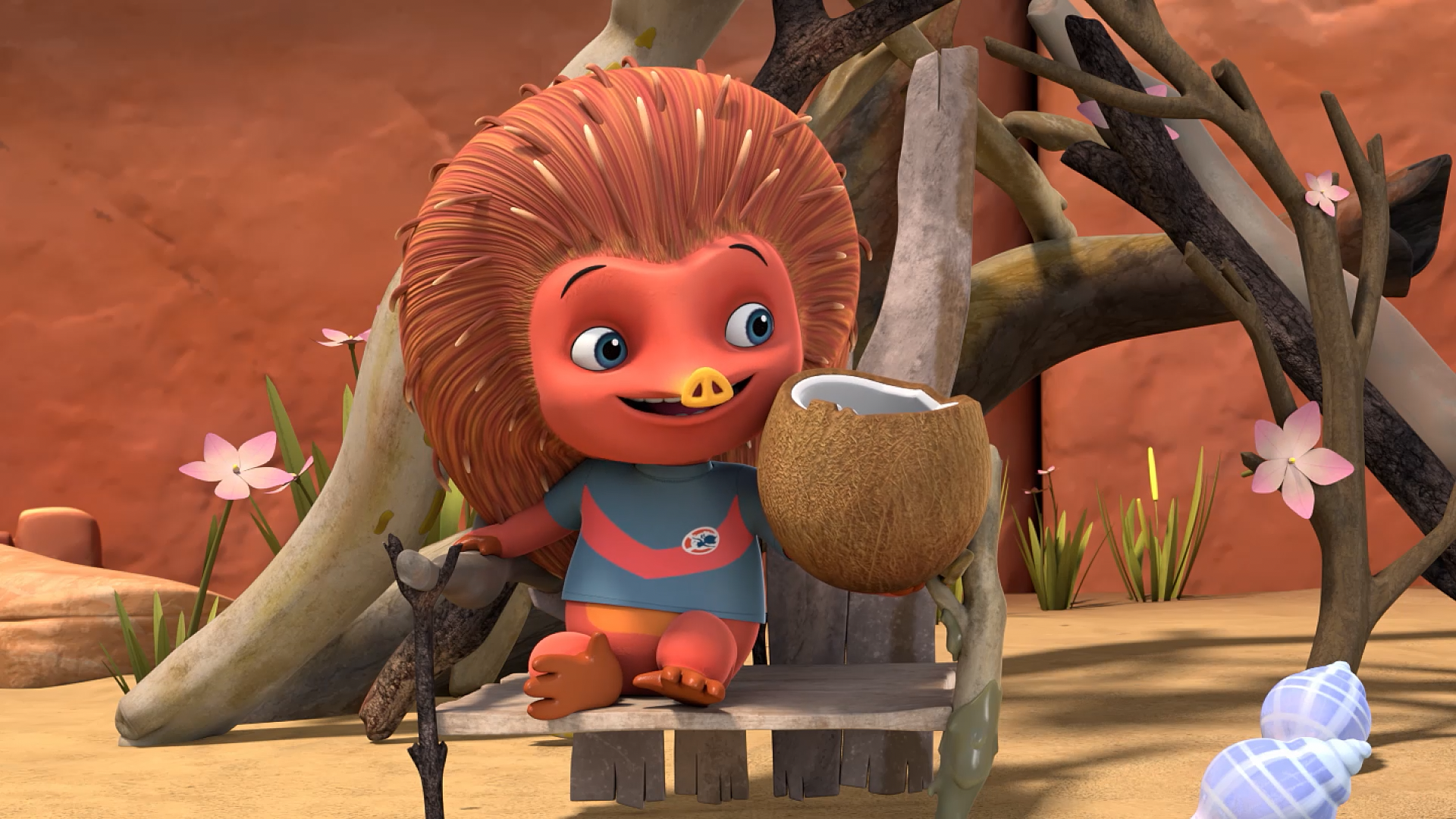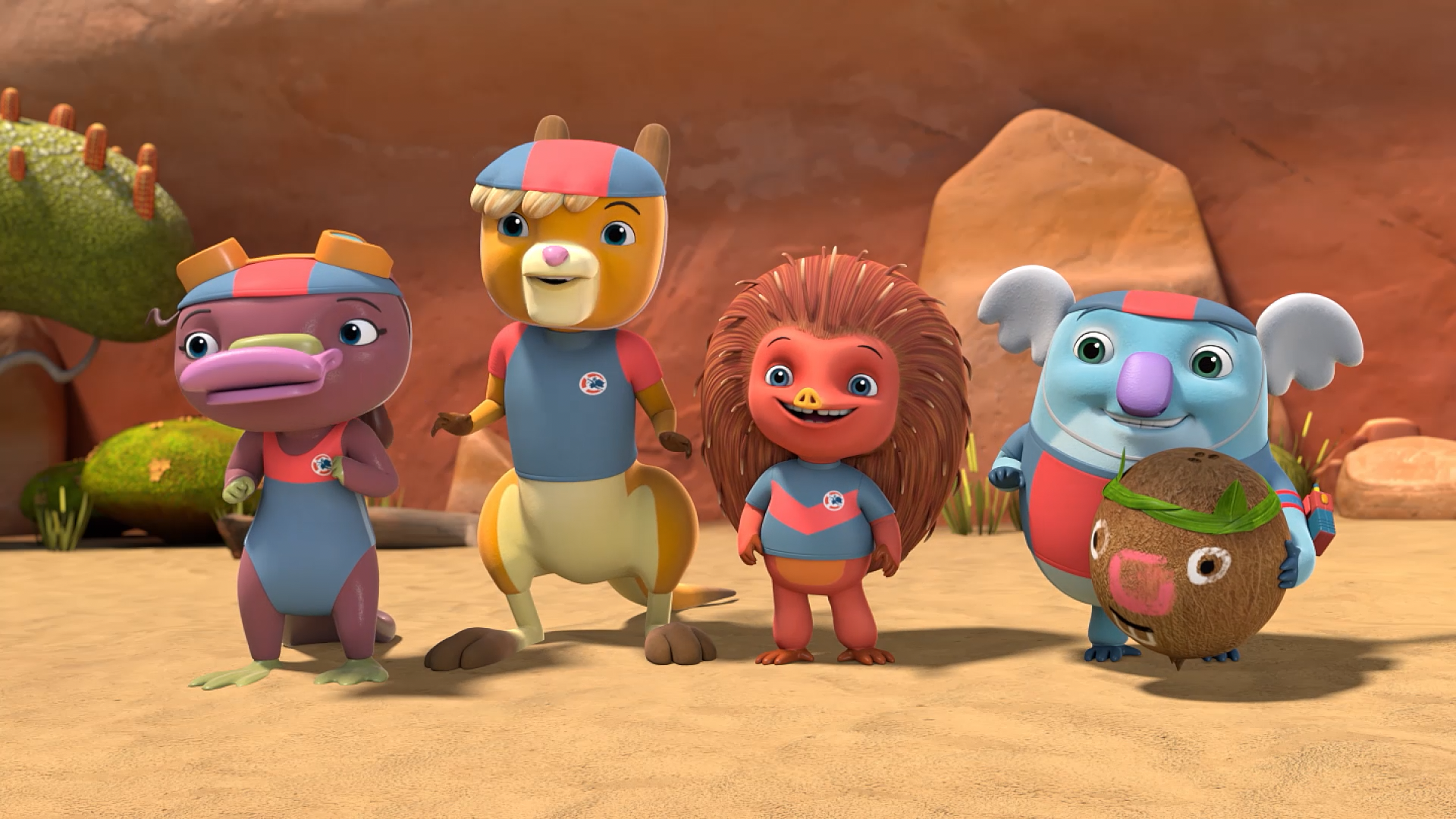
Lesson 5: Balance

Learning intention: In this lesson, you will learn some movement skills that will improve your balance, and reflect on things you used to find hard, but got better at!
Task 1: Personal Achievements
Watch
Reflect
Thinking about the clip from Kangaroo Beach, talk to your classmates about these questions:
- How does Neville feel when he hears about the stand-up paddleboarding?
- How does he feel when the other cadets go paddleboarding without him?
- Can you think of a time when you felt this way about something that you couldn’t do?
Explore
During the episode, Neville improves his balance skills through practice and help from an expert - Wanda the Sugar Glider! Can you think of a time that you improved at something, and how you felt once you had achieved your goal? Fill out Neville’s Personal Achievement sheet!

Task 2: The Balance Master
Watch
Explore
There are two kinds of balance – static balance (when you are standing still) and dynamic balance (when you are moving). These exercises will help you with both.
Static balance
- Tree Pose: Stand on one foot. Place the sole of your other foot on your calf or if that is too tricky, your ankle (not your knee). Bring your hands together in front of your chest. Imagine being a strong, still tree. Switch legs.
- Birdie Balance: Stand on one leg. Bend your other knee and bring your heel towards your bottom. You can hold your ankle gently or extend your arms for balance. Hold, then switch legs.
- Wide Wings Balance: Stretch your arms out to the sides at shoulder height, like wings. Start to lean your chest forward and put one leg back behind you, resting your foot on it’s toes. Shift your weight forward onto your standing leg. Lift your back leg off the ground. Look forward and pretend to fly.
Dynamic Balance
- Wanda’s Walk the Line: Use tape or chalk on the floor or ground to create straight, zigzag, or curved lines. Walk along the lines, placing one foot in front of the other (heel to toe). If you can go forwards, try backwards, or even sideways, crossing one foot over the other.
- Advanced: try completing any of these balance activities with a beanbag on your head. If you can do that, try them with a bean bag on your hand, arm, foot or back.
Create
Wanda and Neville do some fun balances with different objects – even cake and tea!
Work with a partner to create some fun balance challenges using items and objects that are nearby. Consider using rulers, cushions, tissue boxes, books, pencils, even your own shoes.
Work with a partner to invent some partner balances. Here are some examples.
- Balance a small stuffed animal on your head while sitting down. Slowly stand up. See if you can transfer the toy to your partner’s head without using your hands. Could you create a balance challenge like this using your feet or shoulders? How many people could you transfer the object to – could you make a balance ‘chain’ of people?
- Stand with your backs touching. Slowly step one foot slightly away from the other, maintaining contact through your backs. Try lifting your arms overhead or out to the sides while keeping your backs pressed together for balance. Could you use each other’s weight to try a side to side balance like this, or a back to back one?
- Could you make a partner balancing relay, walking a long a line on the floor like Neville and Wanda, and transferring objects to someone at the end?
Task 3: Out in Nature
Reflect
- During this episode, what was the reason that the Junior Cadets got into danger while they were paddle boarding?
- How could other aspects of nature – like wind, tide, weather, sun, temperature – make a safe natural water environment become unsafe?
- What safety equipment did the Junior Cadets take paddle boarding with them?
Create
Draw a picture of yourself wearing all the safety equipment you should have with you for an outdoor water adventure. It should include life jackets, sunscreen, a hat, other sunsmart clothing like screen or a rash vest, a wetsuit, walkie talkies and of course spare batteries. Add in an adult nearby who can supervise.
Explore
While they are stuck on the island, the Junior Cadets think of some inventive ways to pass the time using the objects they find on the beach. Go outside into your playground or another outdoor space. What objects can you find that you could collect to make your nature play activity? Remember: only pick up objects that are safe. Always collect natural objects while being supervised by an adult, and if you are not sure if something is safe or not, ask for help.
Find a collection of safe sticks and branches. Can you make a seat, a flag or a house of branches in your outdoor playspace, like Spyke does?

Create
Look for gumnuts, feathers, leaves, twigs and pebbles. Collect them into your hat, a cup or a container and take them back inside with you. Can you turn what you have collected into a miniature version of someone – like Frizzy does when she makes Coco Nev? Use chalk, crayons, paint or other materials to create your nature person.

Australian Curriculum Links
|
|
Foundation |
Year 1 |
Year 2 |
|
Moving our bodies |
practise fundamental movement skills in minor game and play situations sending, controlling and receiving objects at different levels and in different ways applying fundamental movement skills for purpose and enjoyment in natural environments
experiment with different ways of moving their body safely and manipulating objects and space persisting with challenges and demonstrating resilience while moving their body in a range of situations |
practise fundamental movement skills and apply them in a variety of movement situations demonstrating balances and describing what helps to maintain stable positions
investigate different ways of moving their body, and manipulating objects and space, and draw conclusions about their effectiveness demonstrating changes in speed, direction and level as they use locomotor and non-locomotor skills in sequences using different types of equipment to create an original game |
|
|
Making active choices |
participate in a range of activities in natural and outdoor settings and explore the benefits of being physically active exploring a range of ways to be active and participate safely in outdoor or natural settings |
participate in a range of physical activities in natural and outdoor settings, and investigate factors and settings that make physical activity enjoyable recognising the physical features in a range of different environments, including natural and outdoor settings, that make physical activity in these spaces enjoyable
identify how different situations influence emotional responses |
|
|
Interacting with others |
express and describe emotions they experience |
||
|
Identities and change |
investigate who they are and the people in their world identifying ways they use their strengths in physical activities to help themselves and others to be successful |
describe their personal qualities and those of others, and explain how they contribute to developing identities describing personal achievements and sharing how they felt and how it influenced their personal identities |
|
Australian National Benchmarks for Swimming and Water Safety
|
|
Fundamental Stage |
Acquisition Stage |
|
Milestone |
Identify rules for safe behaviour at aquatic environments at or near the home |
Understand and respect safety rules for a range of aquatic environments Identify hazards in a range of aquatic environments |